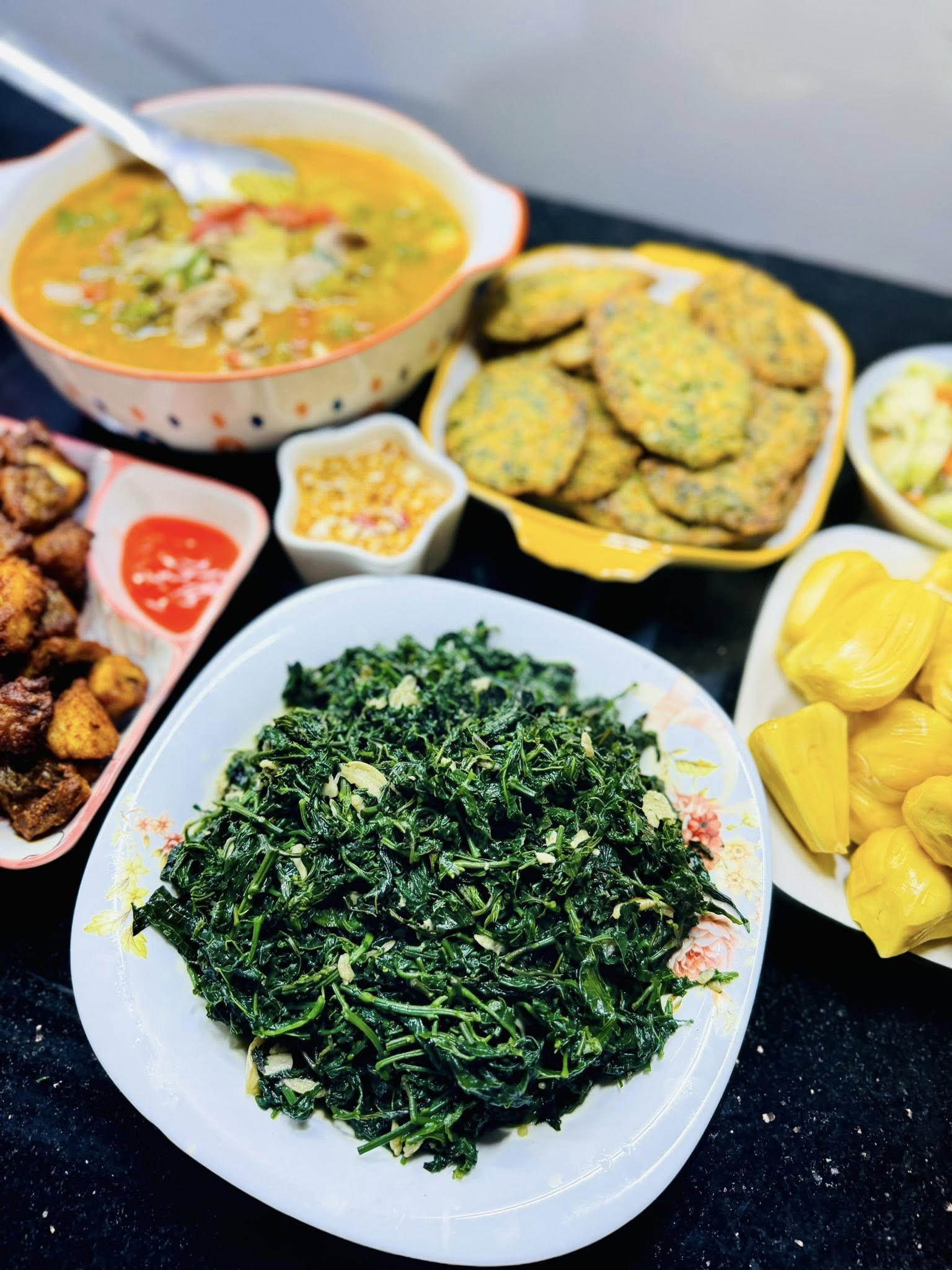
Dang cay (Clerodendrum cyrtophyllum) is a wild plant found along forest edges and high mountains. It has a slender stem, wiry branches, and very green leaves.
It grows in places like Lang Son and Tuyen Quang. In Phu Tho, dang cay is particularly abundant and cherished by locals as a “free” specialty.
Interestingly, while the leaves are bitter, the roots are sweet and refreshing. Locals often dig up the roots, chop them, dry them, and roast them to brew as a prized medicinal tea.
The tender shoots and young leaves of dang cay are used as a clean, natural vegetable for cooking.
Lai Thu, a vendor in Ha Hoa, Phu Tho, said dang cay is a familiar forest vegetable for locals but lesser-known to tourists.
In Ha Hoa, where the plant thrives, it’s a beloved natural ingredient sought after each season. From the first to third months of lunar year, dang cay sprouts new shoots. Its branches are covered with tender, glossy green buds.
This is the time when dang cay vegetables are the freshest and most delicious. Locals flock to the mountains and forests to pick the young leaves and shoots for sale or home cooking.
“Locals say dang cay should be picked young and on warm days. Then, it has a mild bitterness and stays fresh and tasty. It must be cooked immediately after picking to retain its crunch and flavor,” Thu explained.
She added that preparing dang cay is simple. It needs to be washed clean and left whole or chopped, depending on preference and cooking style.
This vegetable can be turned into rustic yet flavorful dishes like stir-fried with eggs, stir-fried with duck or chicken giblets, steamed with rice, boiled and dipped in sesame salt, or cooked in meat broth.
Each dish has a unique flavor, praised by locals for its cooling and palate-cleansing qualities.
“People often lightly boil dang cay before cooking it into various dishes. This keeps its vibrant green color and crisp, delicious texture,” Thu said.
Once a local vegetable, dang cay is now gaining popularity among diners in Hanoi and nearby provinces, fetching VND80,000-100,000 per kilogram.
In Phu Tho, it is cheaper as people don’t have to pay cultivation or transport costs, selling for VND30,000-50,000 VND per kilogram.
Diners who’ve tried dang cay describe its taste as slightly bitter but nutty. First-timers may find it challenging, but they will like it later.
Thao Trinh